Looking up at the night sky, you might wonder why it’s not entirely dark. This curiosity stems from various factors that illuminate the sky, even in the absence of moonlight. Airglow, starlight, and artificial lights all play their roles.
But this brightness isn’t always ideal. Light pollution from cities and atmospheric phenomena can obscure the true beauty of the night sky, making stargazing challenging and diminishing the visibility of celestial objects.
In this article, I’ll guide you through understanding these factors, from the role of distant stars to the impact of urban light pollution. You’ll learn how to find the best conditions for stargazing and appreciate the complex beauty of the night sky.
Key Things to Know:
- Airglow and light pollution are significant contributors to the night sky’s brightness.
- Astronomical twilight and atmospheric effects impact the visibility of stars.
- Urban light pollution significantly affects stargazing; reducing it can enhance your experience.
- Understanding these elements helps us appreciate the night sky’s beauty.
Recommended For You
Fundamentals: Why is the Night Sky so Bright?
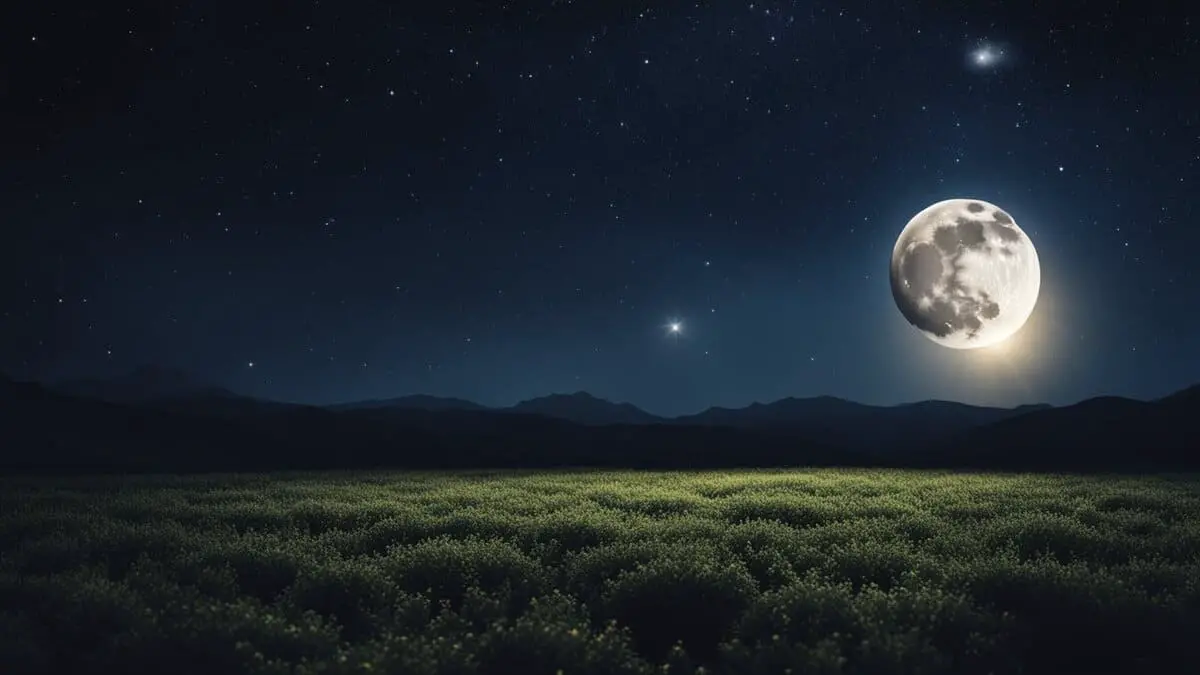
When I first started stargazing, I noticed the night sky was never completely dark. This is because of various factors that contribute to the sky’s brightness.
In this section, we’ll explore the main contributors to night sky brightness.
The primary source of night sky brightness is airglow. I’ve observed airglow’s subtle luminescence myself on clear, dark nights.
Airglow occurs when molecules in the upper atmosphere become excited and emit light. This process is responsible for the green line, even on nights without auroras.
Another reason for the brightness is the scattering of sunlight, starlight, or artificial light by particles like dust and atoms in the atmosphere.
Here are some other contributors to night sky brightness:
- Scattering of starlight: The light emitted by countless stars in our galaxy makes the night sky brighter. The Milky Way is an excellent example of this.
- Light pollution: Artificial lights from cities and various human activities can also cause the night sky to appear brighter.
Now, let’s talk about how these factors depend on the distance and height from the Earth’s surface:
- Distance: The farther away a light source is, the less it contributes to the night sky’s brightness. This is because light intensity decreases with distance.
- Height above the ground: As you go higher in Earth’s atmosphere, molecular composition, gases, and dust can influence the brightness of the night sky. At higher altitudes, airglow may be stronger due to the increased interaction of molecules with solar and cosmic radiation.
The night sky’s brightness is caused by various factors that depend on Earth’s atmosphere, space, and human activities.
Astrophysical Sources of Light
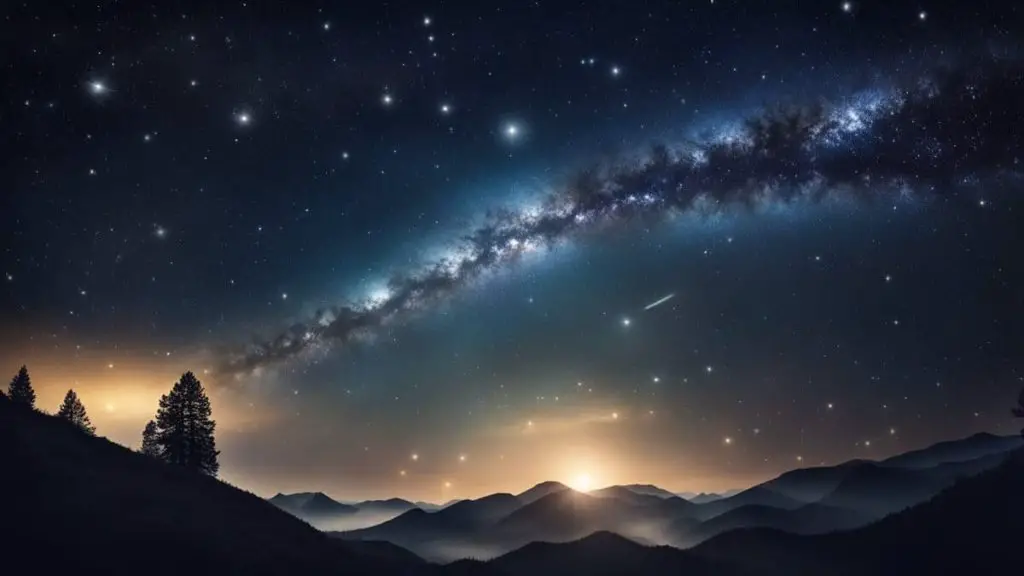
Stars and Constellations
When you look at the night sky, the most prominent light sources are the countless stars dotting the vast expanse. Stars, including our Sun, are massive celestial objects that produce light and heat through nuclear fusion.
There are various constellations, which are groups of stars that form recognizable patterns. Some well-known examples include Ursa Major (the Great Bear) and Orion (the Hunter).
Here is a list of some of the brightest stars in the night sky:
- Sirius
- Canopus
- Arcturus
- Vega
- Capella
The Milky Way
Our Solar System is part of a much larger structure called the Milky Way galaxy. The glow of this impressive structure can be seen as a faint band stretching across the night sky.
The Milky Way is home to over 200 billion stars, along with dust and gas that emit light when interacting with the radiation emitted by stars. This interaction contributes to the brightness of our night sky.
Distant Galaxies

Beyond the Milky Way, countless other galaxies also emit light. Although they are extremely far away, these distant galaxies still contribute to the overall brightness of the night sky.
Some famous galaxies you can observe include the Andromeda Galaxy and the Whirlpool Galaxy. Remember that you need a telescope to see these distant galaxies more clearly.
Planetary Reflections
Another light source in our night sky comes from our Solar System. Planets, especially Venus, can appear relatively bright in the sky.
This brightness is not due to any light production from the planets themselves but rather from the reflection of sunlight.
As the sunlight bounces off planetary surfaces, it is scattered in various directions, some of which reach our eyes here on Earth, providing a brighter view of the night sky.
Atmospheric Effects on Night Sky Brightness
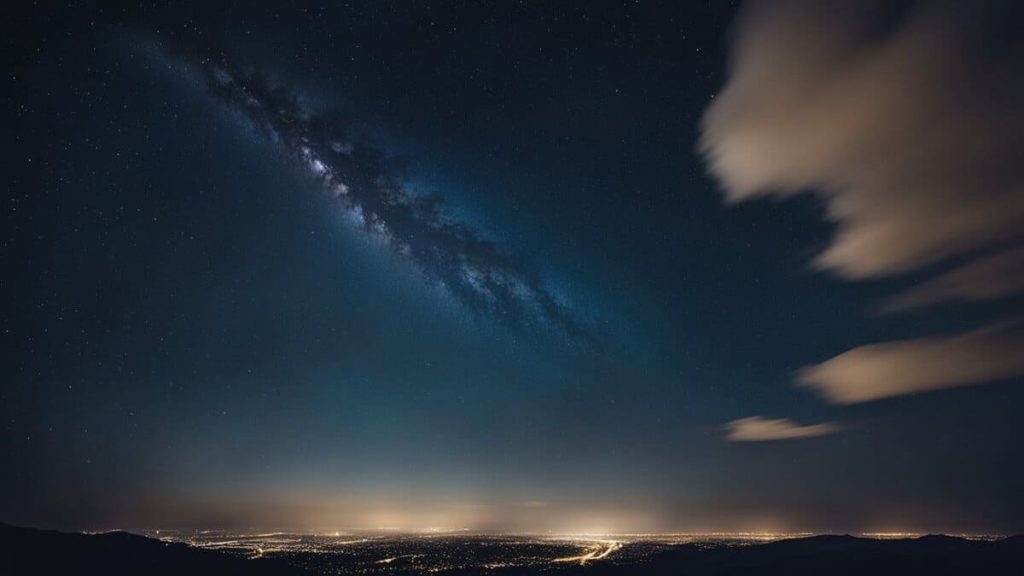
In this section, we’ll explore various atmospheric effects that contribute to the night sky’s brightness.
As an amateur astronomer, understanding these effects can help you better appreciate the beauty of the night sky.
Astronomical Twilight
Astronomical twilight is when the sun is just below the horizon, and its light still influences the sky’s brightness.
During this period, the sky appears brighter than it would on a moonless night.
There are three stages of twilight, each with different brightness levels:
- Civil twilight: Sun is 0-6° below the horizon
- Nautical twilight: Sun is 6-12° below the horizon
- Astronomical twilight: Sun is 12-18° below the horizon
As the sun moves further below the horizon, the night sky becomes darker, making it easier to observe celestial objects.
Airglow Phenomena
Airglow is a natural phenomenon that occurs when oxygen and nitrogen molecules in the Earth’s atmosphere get excited by solar radiation.
These excited molecules emit light, causing the night sky to faintly glow.
This glow is usually not noticeable to the naked eye. Still, it can contribute to the overall brightness of the night sky.
Rayleigh Scattering
Another factor affecting the brightness of the night sky is Rayleigh scattering.
This phenomenon occurs when sunlight interacts with molecules and small particles in the atmosphere, scattering light in different directions. This scattering reduces the contrast between the night sky and celestial objects, making it harder to observe dim objects.
Albedo Effect
The albedo effect refers to how much sunlight is reflected by the Earth’s surface and clouds.
In my stargazing sessions, I’ve noted how the albedo effect varies depending on the landscape. A higher albedo means more sunlight reflection, which increases the night sky’s brightness.
Different surfaces, like snow and black lava rock, have different albedos, affecting the brightness of the landscape under various lighting conditions.
The Influence of Celestial Bodies
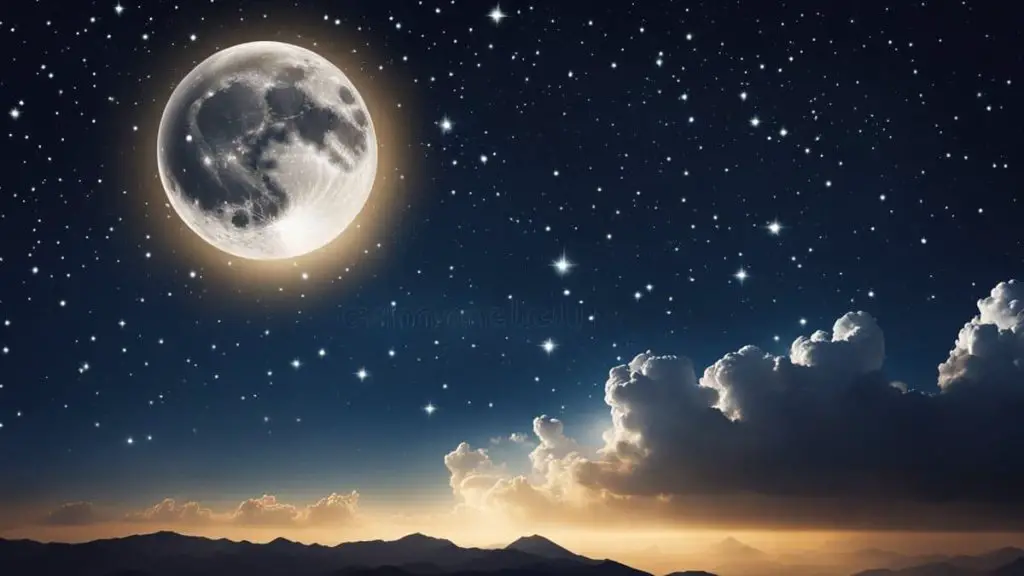
Moonlight Impact
When gazing at the night sky, the moon is one of the key factors contributing to its brightness. My experiences have shown me the significant impact of moon phases on night sky brightness.
Moonlight can significantly affect how well you can observe stars, especially during a full moon. Different moon phases, like a crescent moon, can influence the brightness level in the sky.
Here are some tips to help you adapt to the moon’s brightness:
- Try observing the sky during a new moon or minimum crescent moonlight for a darker sky.
- Use the moon’s brightness to your advantage by focusing on observing planets or brighter star clusters.
Planetary Illumination
Another factor that makes the night sky so bright is the light reflected by planets’ elongation, which refers to the angular distance between a planet and the sun, which plays a crucial role in how bright a planet will appear.
Some key points about planets’ brightness:
- Planets closer to the sun, like Mercury and Venus, go through a cycle of phases similar to our moon, impacting their brightness.
- These closer planets can often appear brighter than stars due to their proximity to Earth and reflective properties.
Keep in mind that light pollution from city lights and other artificial sources can also drastically affect the night sky’s brightness.
So, escaping to a more remote location, away from city lights, can help you enjoy a darker, more impressive night sky.
Human Contributions to Sky Brightness
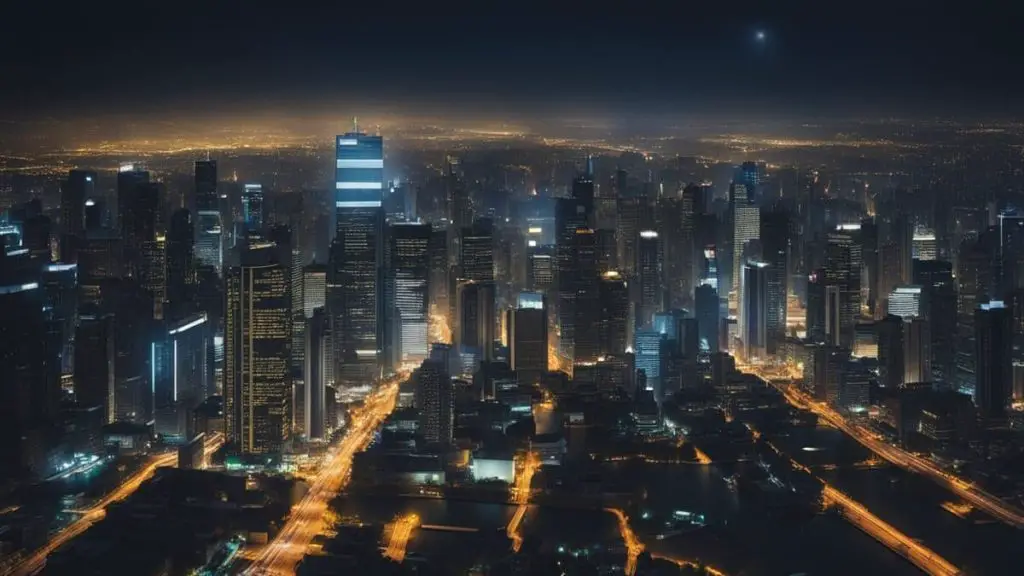
Urban Light Pollution
One major factor contributing to the night sky’s brightness is light pollution caused by urban areas. Living near a city, I’ve witnessed firsthand how urban light pollution affects stargazing.
Cities emit a large amount of artificial light, which scatters into the atmosphere and brightens the sky. This makes it difficult for astronomers and stargazers to observe the stars and other celestial objects.
To help reduce light pollution, you can:
- Use outdoor lighting fixtures with shields to direct light downward
- Choose energy-efficient bulbs with warmer color temperatures
- Only turn on lights when necessary
Scientific Observations Impact
Astronomers rely on powerful telescopes to study the night sky. These advanced instruments are sensitive to even the slightest changes in sky brightness.
Increased light pollution can severely limit the ability of telescopes to observe faint celestial objects.
One interesting study found that light pollution of the world’s night skies has increased by as much as 10% yearly since 2011.
As a result, the visibility of stars has been significantly reduced.
To help protect the night sky for astronomical observations, consider the following:
- Supporting dark sky initiatives and lighting ordinances
- Encouraging the creation of dark sky preserves or parks
- Educating friends and family about the importance of protecting the natural night sky
By taking small steps to reduce light pollution, you can help preserve the beauty of the night sky and support necessary astronomical research.
Understanding Bright Nights
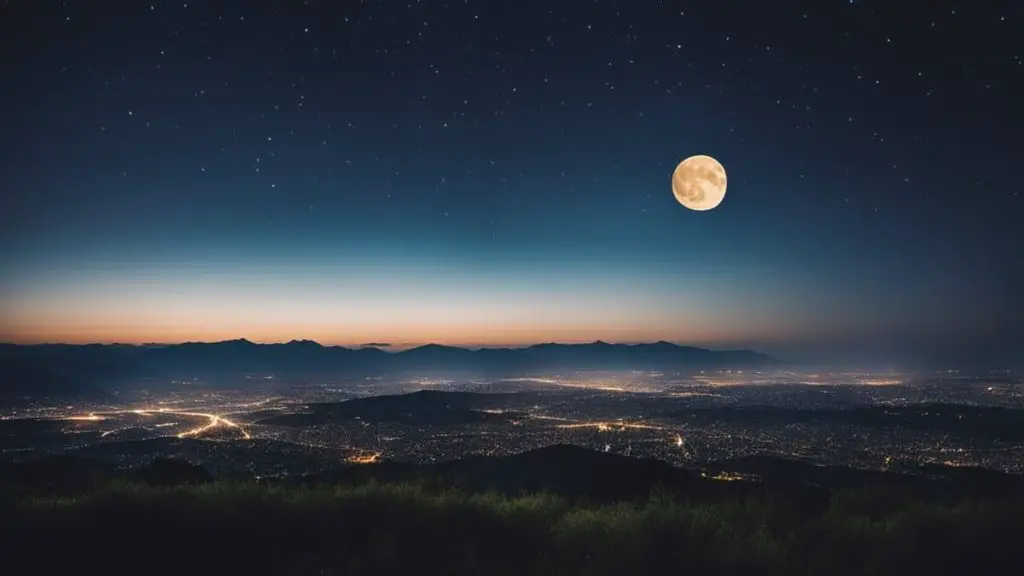
Historical Accounts
Bright nights have been a phenomenon that has puzzled people for centuries. They occur when the night sky is so bright that reading a book is possible, even without moonlight.
One of the earliest accounts of bright nights can be traced back to the Roman philosopher Pliny the Elder.
Recent Research Findings
Researchers from York University made significant progress in understanding bright nights.
They found that this mysterious brightness is not due to the sun or meteors but rather the result of converging zones in the atmosphere. In their study, published in Geophysical Research Letters, the scientists used satellite data to analyze the phenomenon.
Here are some of their findings:
- Bright nights are unrelated to aurorae or any celestial body.
- Converging zones in the atmosphere cause extreme brightness.
- The phenomenon occurs at Earth’s temperate latitudes.
Space Exploration and Sky Brightness

When you observe the night sky, you might wonder why it appears so bright. Factors like light pollution and the moon can affect your perception. Still, space explorations have given us more insights into this phenomenon.
Observations from Spacecraft
Spacecraft like the New Horizons probe have provided valuable data on sky brightness.
Its observations revealed that the sky is twice as bright as previously thought when it traveled beyond the orbit of Pluto.
his has enriched my understanding of the complexities of sky brightness from a space perspective.
Here are some factors that contribute to sky brightness:
- Cosmic radiation: Invisible to the naked eye, it’s present throughout the universe and affects the overall brightness.
- Scattering of sunlight: The atmosphere still receives scattered sunlight even after the sun sets, which can increase sky brightness.
Astronaut Accounts
Astronauts aboard the International Space Station (ISS) have a unique perspective on sky brightness.
During their time in space, they’ve shared some observations:
- The night sky from the ISS appears much darker than Earth due to a lack of light pollution. However, bright spots such as cities are easily visible.
- Earth’s atmosphere is crucial in creating a light gradient to dark as the day transitions to night.
Physical Dynamics of Nighttime Brightness

Interactions with Earth’s Atmosphere
To understand why the night sky is bright sometimes, you need to know how the Earth’s atmosphere plays a role.
The atmosphere is composed of several layers; its primary components are oxygen and nitrogen.
When the sun’s ultraviolet radiation interacts with these gases, it generates a glow known as airglow.
Here are some factors that can affect airglow:
- Solar activity
- Atmospheric waves
- Changes in temperature and pressure
Research has shown that the night sky’s brightness can be attributed to the merging of four distinct types of high-altitude atmospheric waves, which amplify the ever-present airglow by up to 10 times or more.
Reflection and Absorption Processes
Another major contributor to sky brightness is the reflection and absorption of light by various elements in the Earth’s atmosphere, such as water vapor and dust particles.
Witnessing these processes in action has been a fascinating aspect of my stargazing.
The amount of light energy that’s reflected or absorbed can vary depending on factors like:
- Atmospheric composition
- Cloud cover
- Surface conditions (e.g., snow or ice)
For instance, on a moonless night, the brightness of the landscape can range from 0.000001 cd/m² in complete darkness to 8,000 cd/m² under bright sunlight, depending on the reflectance of the surface.
Additionally, the color of the sky will also vary with different atmospheric phenomena, such as the green hues created by excited oxygen molecules in the polar auroras.
Frequently Asked Questions
Can I observe airglow with the naked eye, or do I need special equipment?
Airglow is usually subtle and may require dark, clear skies to be visible to the naked eye. While special equipment like a telescope can enhance the view, patience and a dark observation spot are often enough to observe airglow’s faint glow.
How does the brightness of planets compare to stars in the night sky?
Planets often appear brighter than stars in the night sky due to their proximity to Earth and ability to reflect sunlight. Unlike stars, which emit light, planets like Venus can be exceptionally bright due to their reflective surfaces.
What are the best conditions for observing the Milky Way?
The best conditions for observing the Milky Way include a new moon night, minimal light pollution, and clear skies. These conditions reduce sky brightness and enhance the visibility of the Milky Way’s intricate details and structure.
TL;DR
- Night sky brightness is primarily caused by airglow, light pollution, and astronomical twilight, affecting our ability to observe celestial objects.
- Urban light pollution significantly impacts stargazing, making it crucial to find darker skies for a better experience.
- The brightness of planets and stars varies, with planets often appearing brighter due to the reflection of sunlight.
- The best conditions for stargazing and observing phenomena like the Milky Way include dark skies, a new moon, and clear weather.
- Understanding the factors influencing night sky brightness helps enhance the appreciation and experience of stargazing.
Your thoughts and questions are a vital part of our stargazing community. Whether you’re curious about the night sky, have your own observations to share, or want to chat about the cosmos, I’m here to engage and learn with you.
Leave your questions and comments below – let’s explore the universe together!




